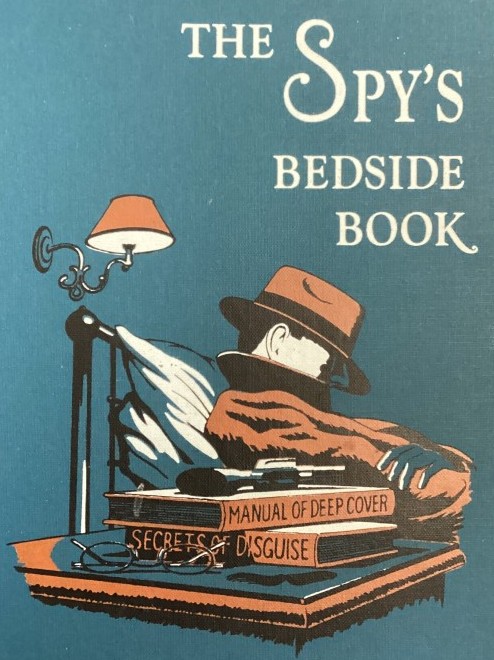Inspiring Older Readers
 posted on 30 Aug 2023
posted on 30 Aug 2023
The Spy’s Bedside Book by Graham and Hugh Greene
This really is one of those fascinating little curiosities of the publishing world that seem to come from left-field but somehow settle into the mainstream as if they’ve always been there. When it was published back in 1957, The Spy’s Bedside Book went off into areas that mixed fact and fiction in such a way that it was hard to tell which was which.
In truth, this was two literary brothers having a bit of fun and, in doing so, showing us not just how well-read they were but just how much of an insight they have on the real workings of the spy trade.
Ostensibly, what we have here, is a carefully curated selection of excerpts from a whole range of ‘spy related’ fiction – some of it classic, some more marginal – non-fiction and real official documents designed for real-life spies. The Greene’s have quite a time mixing the potion and leaving it to us to discover whether were in the land of fact or fiction.
The selected excerpts are grouped together under such headings as ‘Delights of the Profession’, ‘Hazards of the Profession’, A Gaggle of Suspects’, Tricks of the Trade’ and a clutch of other headings chosen with tongue firmly in cheek.
The book has gone down in literary history for the famous story – perhaps apocryphal, perhaps not – of how the anthology was bought in bulk numbers by the East German intelligence service and passed on to the secret services of other countries friendly to those within the Soviet sphere of influence. Whether this is true is really neither here or there – one way or another the book sold in large numbers and the whole notion of ‘spy’ literature took on another dimension.
One interesting question that arises from the selection made by the Greenes is just what constitutes a legitimate piece of ‘spy’ literature? There is a real debate to be had over what the boundary line is between spy fiction and detective fiction, for example. In my Folio Society edition of the book, former Head of MI5, Stella Rimington (also now a novelist herself) uses her introduction to ask this very question:
“What really is a spy story? Is John Buchan’s Greenmantle, which supplies the anthology’s first tale, truly a spy story or just a ripping good yarn, an adventure story…?”
And what about Sherlock Holmes, whose cases often appear to have significance for national foreign policy? And, intriguingly, are the Bond adventures really the adventures in spying or just the machinations of what Rimington calls ‘a licenced killer with no mission but to destroy.’?
All fascinating stuff but what is the anthology like as a reading book? Sadly, I have to say not terribly good. Whilst I can see and delight in its history as a curiosity, I found the book extraordinarily frustrating – primarily because of the length of each excerpt. Each selection is clipped to the minimum and none of them are long enough to allow you to settle into anything. Chopping between often completely divergent styles of writing is unsettling and nothing is quite substantial enough to be the kind of taster that will make you go off and search out the long version.
Ultimately, I will keep this book for the story it tells in terms of its publishing history rather than for what’s inside – but, of course, others might find it a more substantial meal than I did. As always, you’ll need to find out for yourself where you sit on the merits of a book as unusual as this.
Copies of the original 1957 hardback sell for silly money but the very nicely packaged Folio Society edition can be picked up for modest prices well below £15.
Terry Potter
August 2023